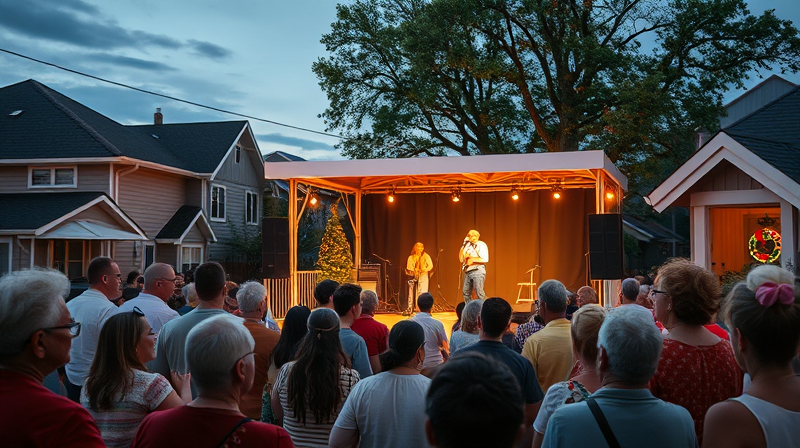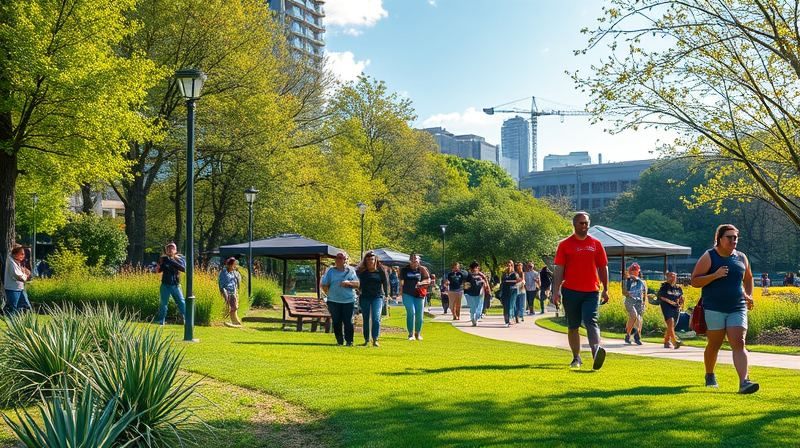Bringing a community together can be one of the most rewarding experiences you can have. Organizing a neighborhood talent night not only nurtures local creativity but also creates enduring memories for everyone involved. With careful planning and inclusive strategies, your event can shine as a celebration of art, music, comedy, magic, dance, and more. This guide will walk you through key steps to craft an engaging and seamless experience for all.
It is important to understand that the success of a talent night stems from a well-thought-out plan paired with collective community support. As you begin the process, keep in mind the central goal: to bring people together in the spirit of fun and creativity.
Building a Strong Foundation
The first step in your planning process is to build a strong foundation by forming a planning committee. A dedicated team can efficiently distribute tasks such as talent recruitment, venue coordination, technical support, and marketing. Dividing responsibilities among individuals or subcommittees ensures that each aspect of the event is handled with care and precision.
- Establish the Roles: Identify community members whose skills align with different aspects of production.
- Delegate Effectively: Set clear responsibilities and deadlines to keep everyone on-track.
This collaborative approach not only lightens the organizational load but also leverages the unique strengths of community members, making the event more vibrant and dynamic.
Deciding the Structure and Focus
Consider what you envision for your neighborhood talent night. The format of your event will influence nearly every decision that follows. Decide early whether you want a competitive format or a more casual showcase. Defining the style of your event will guide your decisions on talent selection, judging, and prize distribution.
- Competition or Showcase: If you choose a competition, establish judging criteria and secure experienced judges. If you opt for a showcase, focus on offering a platform where local talent can shine without the pressure of competition.
- Performance Categories: Determine the types of acts you want to feature, ensuring a mix that represents the diverse interests and skills in your community.
Setting a clear structure early creates a roadmap that all committee members can follow, which is essential for effective organization and smooth execution.
Choosing the Right Venue and Date
Selecting a suitable venue and scheduling the event are foundational to a successful talent night. A venue should be spacious, accessible, and accommodating to both performers and the audience. Consider options such as community centers, schools, or outdoor spaces. Accessibility is key—ensure that your chosen location is ADA-compliant and that seating arrangements consider all community members.
- Time for Planning: Schedule the event with at least a 6 to 10-month lead time to accommodate auditions, rehearsals, and promotional activities.
- Venue Capabilities: Ensure the venue has the necessary facilities to support performances, such as a stage, sound system, and appropriate lighting.
This stage of planning is crucial, as the right timing and location can set the tone for a memorable experience.
Talent Recruitment and Preparation
One of the most exciting aspects of organizing a talent night is recruiting the performers. Announce auditions widely and establish clear guidelines about the types of acts you are looking for. Inclusivity matters—ensure that everyone has a fair chance to participate and shine.
- Audition Announcements: Use local message boards, social media, and community newsletters to spread the word.
- Rehearsal Opportunities: Offer scheduled rehearsals and technical support to help performers feel confident on stage.
By supporting the talent right from the start, you encourage a vibrant and diverse lineup that will engage and captivate the audience.
Planning the Program and Managing Technical Needs
A well-organized program is the backbone of a smooth-running event. Draft a detailed schedule that includes time slots for each performance, intermissions, and seamless transitions between acts. A balanced program ensures that the energy level remains high and that every act receives its due spotlight.
- Detailed Scheduling: Keep the event concise—two hours is generally an ideal timeframe to maintain engagement.
- Technical Preparedness: Confirm that all audio, visual, and lighting equipment is operational. A full dress rehearsal to test all technical aspects is highly recommended.
Proper program planning and technical management are essential for minimizing disruptions and ensuring that the focus stays on community celebration.
Promotion, Food, and Finishing Touches
Promotion is crucial in ensuring a great turnout. Utilize local channels—flyers, community emails, and social media platforms—to create buzz around your talent night. Highlight the unique qualities of your event to attract a wide audience.
- Spread the Word: Use dedicated hashtags and community networks to enhance your reach.
- Food and Refreshments: Plan a menu that caters to various tastes and dietary requirements, whether it’s a potluck, food trucks, or catered options.
As the event nears, ensure that you conclude on a high note. Ending the night with a thank-you speech or small tokens of appreciation for the performers can leave a lasting positive impression on participants and attendees alike.
Ultimately, hosting a neighborhood talent night with careful attention to these details not only elevates the experience for everyone involved, but also lays the foundation for what could become a cherished recurring event. Celebrating local talent and fostering community bonds through such events creates a sense of belonging and inspires future creativity within the neighborhood.







